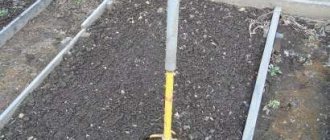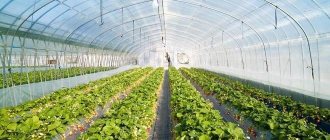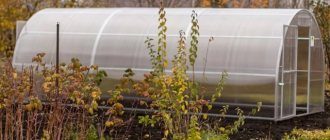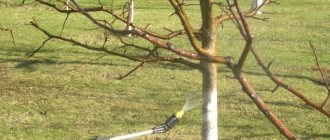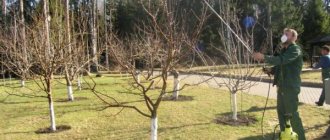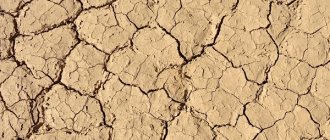Disinfection of soil in the fall from diseases and pests. How and with what to disinfect the soil?
There are several ways to disinfect the soil. Some of them are applicable only during periods of absence of crops in the soil due to their high toxicity, others can be used all year round. Drugs can have a wide spectrum of action or be developed against certain diseases.
All methods of soil disinfection can be divided into several categories:
- chemical - the use of artificially synthesized substances that destroy pathogenic microorganisms;
- thermal (calcining, pouring boiling water or freezing) - based on the low resistance of bacteria to various temperatures;
- phyto-purification - planting of useful plants that act as fungicides;
- ecological - the use of organic fertilizers in large quantities (manure, compost) in the absence of plants, which is why useful soil microorganisms are formed.
Methods for disinfecting soil will differ. Some of them have a wide spectrum of action and can be used for prevention purposes as well. The rest affect only the causative agents of certain diseases.
Weeds
Weeding by hand or with tools is the easiest and most affordable way to get rid of weeds. However, the procedure will take a lot of time and effort. There are several simpler ways to deal with weeds:
- use herbicides at the stage of weed germination (Lazurit, Arsenal, Tornado);
- folk remedies - vinegar, table salt, citric acid;
- a dark film with which weeds are covered so that they cannot grow and develop.
Advice! When mechanical weeding, it is recommended not to pull out the weeds, but to cut off their above-ground part. In such conditions, even the most resistant plants die due to the impossibility of photosynthesis.
In the greenhouse
In the greenhouse, conditions are created for the full development of not only plants, but also pathogenic microflora. It can penetrate not only with soil, but also with household items and tools. The danger is also the remains of plants from which they have already harvested.
In greenhouses, it is recommended to change the soil frequently, not only because of its rapid depletion, but also due to the presence of pests in it. An alternative advice is to do a general cleaning of the greenhouse twice a year, use means for disinfecting the soil and process the seedlings.
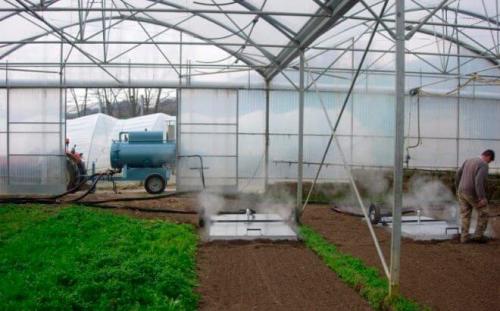
For seedlings
Seedlings are especially sensitive to pathogenic microflora. The presence of weeds in the soil reduces the chances of normal germination. One way to protect plants is to pre-treat the soil with a chemical disinfectant.
If the seedlings are planted in a small amount of soil, they can be treated with other methods:
- freezing at negative temperatures for several days;
- roasting in the oven;
- steaming in a water bath.
Advice! There are specially prepared seedling mixtures on sale. However, experienced gardeners recommend that they be disinfected according to a general method.
Disinfection of containers for planting
If you use last year's containers for sowing and transplanting that you have already used for the same purposes, then it is highly recommended to disinfect them. This can be done, for example, with a solution of the same pharmacy hydrogen peroxide! We dilute 2-3 bottles (standard volume of 100 ml) of pharmacy peroxide in a 1: 1 ratio with warm tap water. Thoroughly wash the containers with this solution, then rinse them with clean water. Processing should only be carried out with protective gloves!
Reference: Hydrogen peroxide has a universal antimicrobial effect. Gram-positive and gram-negative bacteria, viruses, and many types of pathogenic fungi are sensitive to it. Causes the death of spores of most sporogenic bacteria.
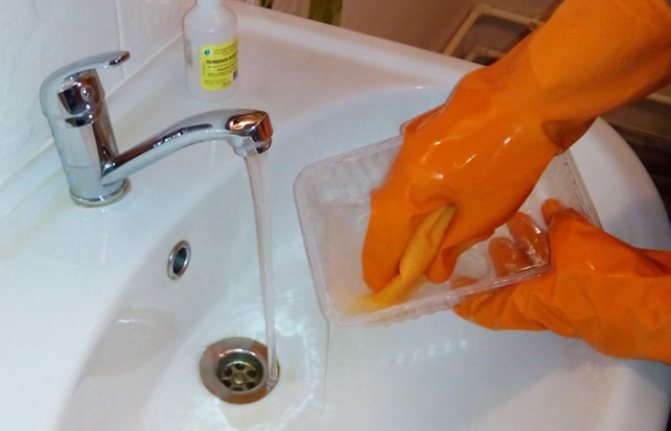

Photo: disinfection of sowing containers
What soils can be considered "proven universal soil" in green bags, sold in Leroy Merlin. Subject to the technology described above - aeration, mixing, disinfection with peroxide, etc. this soil gives good results.
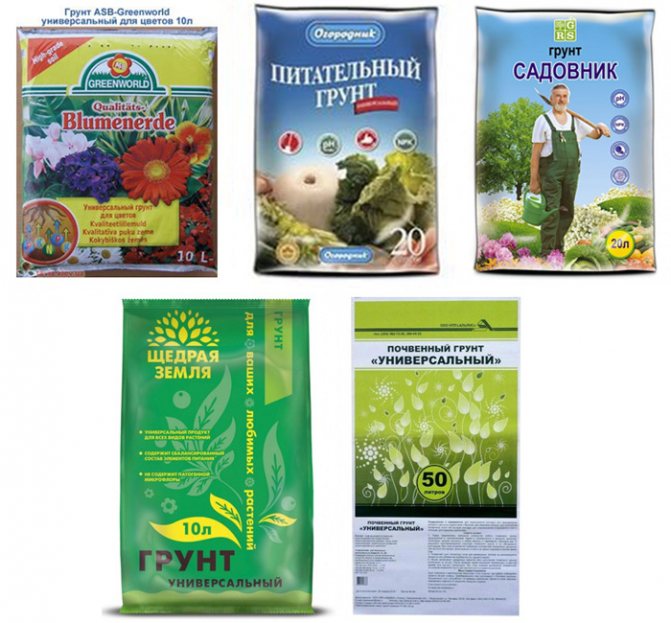

Photo: samples of packages of soil
How to disinfect the earth with copper sulfate. How to dilute copper sulfate for greenhouse processing
To clean the greenhouse, a solution is prepared on the basis of copper sulfate, with which the soil, frame and coating are successively treated. At the same time, the concentration of the chemical for soil disinfection should be much lower. This is due to the increased acidity of copper sulfate, its negative effect on the fertility of the substrate and the ability to accumulate.
Before diluting the copper sulfate for processing the greenhouse, all plant residues are carefully removed inside, the working tools, irrigation containers and reusable containers for seedlings are taken out and disinfected separately. Then comes the turn of the soil. In this case, the content of copper sulfate should be no more than 50 grams per bucket of water, and the consumption should be about 2 liters per square meter.
In spring, soil cultivation in the greenhouse with copper sulfate in combination with lime, which neutralizes the increased acidity of the solution, reduces the toxicity of the chemical. At the same time, the summer resident will be able not to lose the fungicidal effect of the liquid on pathogenic fungi and other pathogens of plant diseases.
You can get the desired composition by separately mixing solutions of copper sulfate and lime, and then, gently stirring, pouring the blue liquid into the milk of lime. After stirring and straining, the product can be applied.
How to process a greenhouse with copper sulfate in the spring? To wash the film, polycarbonate, metal or plastic frame, use a solution that is prepared at the rate of 100 grams of vitriol per 10 liters of water.
- While stirring, the powder is dissolved in a small volume of warm water.
- Then the concentration is adjusted to the desired concentration by adding the required amount of water.
- To improve the adhesion of the solution to the material and enhance the detergent properties, 150 grams of liquid or crushed laundry soap is added to the water.
Steaming purchased soil
Attention! Immediately after treatment, the soil is sterile. But after a couple of weeks, the microflora in it will recover. Where is the guarantee that it is only useful? Experts recommend that after disinfection, the soil should be packed in tight sterile bags. Open just before planting and add Biohumus (one-liter jar to a bucket of soil) or Supercompost (1-2 glasses per bucket). So you will finally protect the plants.
Some practitioners advise to cultivate not only garden soil, but also purchased soil. To do this, place a closed bag with ready-made potting soil in a bucket. Pour boiling water along the side of the bucket and close the lid tightly. Remove the bag only after it has cooled completely.
Disinfection of soil from fungal infections
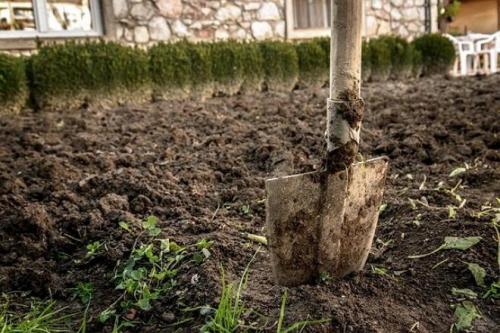

Improper use of the soil over time leads to the accumulation of pathogenic microorganisms in the root layer, which lead to plant disease and loss of yield.
The greatest harm to garden crops is caused by fungal infections (late blight, rhizoctonia, scab, alternaria, rot), which reduce the yield by 50-100%.
Gardeners often note that common measures to protect plants from diseases do not bring the expected results. Sometimes a fungal infection can completely destroy living plants in 1-3 days. One of the reasons for such epiphytotic outbreaks is the high infectious background of the soil. Therefore, the land needs proper processing and disinfection.
Soil disinfection methods
In a protected ground (in a greenhouse or container), it is easier to carry out disinfection measures. And in the open ground, it is almost impossible to completely destroy the sources of infection, but even a novice gardener is quite capable of improving the soil.
Techniques for disinfecting soil from fungal infections can be divided into:
- agrotechnical;
- biological;
- chemical.
Agrotechnical soil cultivation
The garden should be divided into narrow beds (1.5-2 m). This will allow you to process them more thoroughly and aerate them, because in thickened plantings, where it is humid and warm, the mushroom mycelium develops very quickly.
In addition, crop rotation (crop rotation) must be observed. One and the same culture can be returned to its original place not earlier than after 3-5 years. During this period, the mycelium dies.
Cultures prone to fungal infections are best planted after onions, garlic, cabbage, legumes. Solanaceous plants (tomatoes, potatoes, eggplants, peppers) should not be planted after their own kind - nightshades. For planting, you need to use healthy material that is resistant to fungal infections, and sowing should be carried out with disinfected seeds.
Also, the affected tops should be carefully removed from the plots and immediately burned.


The remains of infected plants should never be buried in the soil or placed in compost heaps.
Do not overfeed your plants with nitrogen. The applied fertilizers must be balanced - N: P: K = 1: 1.5: 1.5.
Biological soil treatment
In a small area, it is undesirable to use chemicals. It is better to give preference to substances that contain beneficial microorganisms that are safe for humans, animals, insects and other fauna.
The most effective working solutions of the preparations Baikal EM-1, Baikal EM-5, introduced into the soil 2-3 weeks before the onset of autumn frosts. Microorganisms suppress the development of phytopathogens, heal the soil.
You can also use ready-made biological fungicides Bactofit, Trichodermin, Planzir, Alirin B, Fitosporin or Phytocid M and others. After digging in autumn, biofungicide must be added to the topsoil (5-10 cm thick). In the spring (after the snow melts and the onset of stable warm weather), soil cultivation should be repeated.
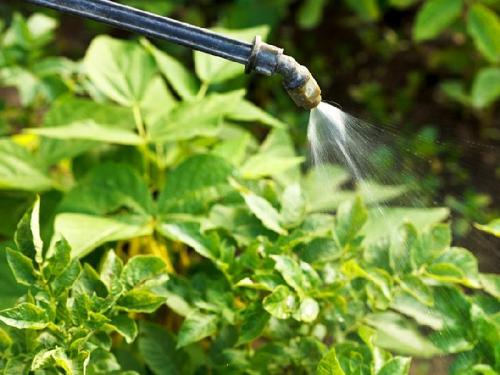

Systematic soil disinfection and treatment of plants with antifungal biological products will help cleanse the soil from infection, protect plants from diseases, and your body - from poisoning
Chemical soil treatment
If biologicals are not effective enough, chemicals are indispensable. Choose those on the packaging of which the 3-4 class of hazard is indicated.
In autumn, the soil can be treated with a 3% solution of Bordeaux liquid. In the spring (in April in dry weather), a 4% solution of copper oxychloride, or a 2% solution of Oxychom, should be added to the topsoil (to a depth of 5-10 cm). Directly upon landing, Quadris, Bravo, Hom and other preparations can be added to the holes (according to the instructions). But keep in mind: they will destroy not only pathogenic, but also beneficial microflora.
Thus, only complex measures will help to thoroughly disinfect the soil at the site and prevent the development of fungal infections. Follow these recommendations annually and your garden crops will yield a rich harvest of healthy fruits.
Steaming in a water bath in a colander.
- cover the colander with a cloth;
- fill a large saucepan with water and let it boil;
- reduce heat and hang a colander with earth over a saucepan. Or install it on top so that the water does not touch the ground;
- warm up for half an hour. The steam penetrating the soil sterilizes it.
According to the same principle, gardeners are advised to fry the earth in a frying pan, ignite it in a microwave oven, stew it in foil or in a sleeve. When processing the last two methods, the water contained in the ground is heated and additionally cleans the soil. You can also pour boiling water over the ground in a shallow container and cover with foil.


Steaming the soil can also be carried out in a double boiler, in a special container
There is one nuance, during heat treatment, both pests and useful microflora die. This means that the above procedures must be done in advance in order to have time to restore the soil before planting.
Some growers recommend combining both temperature methods. First, steam it, then take it out into the frost.
Treatment of the soil in the fall from diseases. How and what to cultivate the land in the fall from diseases and pests:
The soil is the most important part of any garden or vegetable garden. To grow a large crop, you need to regularly take care of the condition of the soil on your land plot. A very important period for such activities is autumn. After harvesting, you need to prepare the soil for the cold weather, to prevent infection with various diseases and pests.
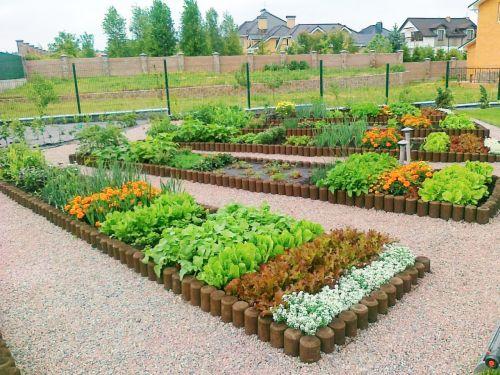

It is necessary to cultivate the soil in the fall every year, but in certain circumstances it is simply necessary to do this. Sometimes in a certain area, the yield drops sharply, which indicates various problems of the soil:
- pest infestation. They can be small (aphids, ticks) and large enough (moles, slugs, bear, shrew and others). Many of them hibernate well (lay eggs, which are buried deep underground, wake up in spring, begin to destroy the crop). Young plants in spring are most susceptible to attack by parasites and pests;
- damage by bacteria, fungi. After harvest, the spores of pathogenic microorganisms remain in the soil. Some may die from the cold, but most of the successfully overwintered, will begin to destroy the future harvest. The main sign of infection is the appearance of black, white spots on the leaves of plantings;
- exhaustion. As the same plant grows on one piece of land, the soil gives off useful substances and minerals. The land is depleted, it loses its fertility. This situation is characterized by unreasonable death of plants, a small harvest;
- the presence of weeds. There are weeds on any garden bed, but in large quantities these plants interfere with the normal growth and development of a full-fledged crop.
How to cultivate the land before planting from pests. Agrotechnical method
This method consists in deep cultivation of the soil, timely fertilizing, compliance with crop rotation. The basis for protecting a garden is quality care. If the soil is properly cultivated, a number of pathogens and pests will die. Deep autumn digging of the site, regular loosening of near-trunk circles and row spacings helps to destroy more diseases, weeds and pests. With deep digging, many pests are removed to the surface, dying from the cold. Some spores and larvae get deep into the soil, they cannot survive there.
Timely weed control is a prerequisite for disease control. Many pests and pathogens first appear on weeds, then they move to cultivated plants.In berry bushes and fruit trees, they eat up leaves, buds, and take root in young shoots. In a weed-free garden, there are no pests.


It is necessary to prune shrubs and trees in a timely manner. When removing diseased raspberry shoots, many diseases and pests that are prepared for wintering are destroyed. If you remove underdeveloped young shoots of gooseberries or currants, you can remove the laid eggs and larvae. By cutting off old branches of the apple tree, you can protect it from scab.
It is imperative to water and feed the plants correctly and in a timely manner, this will strengthen the defenses of plants, help resist pests and diseases. When fertilizing is applied, the chemical composition of the soil also changes.
All plant residues, weeds and cut branches in the fall must be collected and burned in order to destroy the accumulated pests. It is necessary to prepare the garden for winter. Trees should be protected from rodents, wrap the trunks with tar paper, overlap with pine spruce branches or cover with roofing material.

